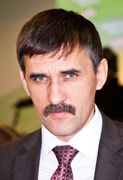  
| |||
|
| Current issue About edition Editorial board To authors Subscription Our authors Files |
|
February 2025, № 1 (245), pages 29-36doi: 10.25198/1814-6457-245-29Kolosova T.A., Goncharova V.A. 1. Blauberg I.V. and Yudin E.G. (1972) The concept of integrity and its role in scientific knowledge. M., 234 p. 2. Blauberg I.V. and Yudin E.G. (1973) Formation and essence of the systems approach. M: Science, 271 p. 3. Bogoyavlenskaya D.B. (2009) Psychology of creative abilities. M.: Fedorov, 416 p. 4. Borzenkova I.V. (2002) Psychology of creativity. Study guide. Kursk.: ROSI, 68 p. 5. Veraksa N.E. (1990) Dialectical thinking and creativity. Questions of psychology, No. 4, pp. 5-8. 6. Wenger A.L. (2003) Psychological drawing tests. M.: Vlados-Press, 160 p. 7. Vygotsky L.S. (1997) Imagination and creativity in childhood. M.: SPb.: SOYUZ, 96 p. 8. Gardner G. (2007) The Structure of the Mind: The Theory of Multiple Intelligences. M.: "Williams", 512 p. 9. Guilford J. (1965) Three Sides of Intelligence. Psychology of Thinking. M.: Progress, 46 p. 10. Guilford J. (1992) Psychology. In 2 volumes. M.: Mir, Volume 1, 460 p. 11. Dorfman L. (2002) Divergent Thinking and Divergent Personality: Resources of Creativity. In E.A. Malyanov, N.N. Zakharov, E.M. Berezina, L.Ya. Dorfman, V.M. Petrov, K. Martindale (Eds.) Personality, Creativity, Art. Perm: Perm State Institute of Art and Culture, Prikamsky Social Institute, pp. 89-120. 12. Dorfman L.Ya. (2005) Creative person: features of thinking and personality. In E.A. Malyanov (ed.) In the time of history and in the space of culture: on the 30th anniversary of the institute. Perm: Perm State Institute of Art and Culture, pp. 86-119. 13. Dryazgunov K.V. (2002) Formation of divergent thinking of teachers in the system of advanced training. PhD dissertation. Kaluga, 142 p. 14. Dunker K.M. (1966) Psychology of productive (creative) thinking. Psychology of thinking. Transl. from English by A.M. Matyushkina. M.: Progress, 264 p. 15. Ilyin E.P. (2009) Psychology of creativity, creativity, giftedness. St. Petersburg: Piter, 434 p. 16. Kislov A.V. and Pchelkina E.L. (2010) Diagnostics of creative abilities of a child. SPb.: Rech. 17. Kolosova T.A. and Goncharova V.A. (2023) Creative imagination as a factor in the academic success of primary school students with general speech underdevelopment and mental retardation. Pedagogical Bulletin, N 26, pp. 45-48. 18. Lelyukh S.V., Sidorchuk T.A. and Khomenko N.N. (2003) Development of creative thinking, imagination and speech of preschoolers. Ulyanovsk, 240 p. 19. Lenkova A.A. (2010) Divergent thinking as a subject of psychological and pedagogical research. Siberian pedagogical journal, No. 11, pp. 250–254. 20. Lenkova A.A. (2012) Development of divergent thinking of creatively gifted primary school students. Conceptual and methodological aspects. Chelyabinsk, 143 p. 21. Leontiev A.N. (2007) Lectures on general psychology. M.: Smysl; Publ. Center "Academy", 511 p. 22. Lubovsky D.V. (2005) Diagnostics of creativity of preschoolers: current state and development prospects. Psychological science and education, No. 8, pp. 82–87. 23. Meerovich M.I. and Shragina L.I. (2000) Technology of creative thinking: A practical guide. M.: AST, 432 p. 24. Mezhieva M.V. (2002) Development of creative abilities in children aged 5-9. Yaroslavl: Development Academy, 128 p. 25. Obukhova L.F. and Churbanova S.M. (1994) Development of divergent thinking in childhood. M .: Publishing House of Moscow University, 80 p. 26. Poddyakov N.N. (2012) Features of psychological development of preschool children. M.: Association Professional Education, 375 p. 27. Poddyakov N.N. and Govorkova A.F. (1985) Development of thinking and mental education of a preschooler. Under the editorship of N.N. Poddyakov, A.F. Govorkova; Research Institute of Preschool Education. USSR Academy of Pedagogical Sciences. M.: Pedagogy, 200 p. 28. Ricoeur P. (1990) The metaphorical process as cognition, imagination and sensation. Living metaphor. Theory of metaphor. M.: Progress, p. 424. 29. Ricoeur P. (1989) Man as a subject of philosophy. Questions of philosophy, No. 2, pp. 41–50. 30. Tamberg Yu.G. (2007) How to Teach a Child to Think. Rostov-on-Don: Phoenix, 445 p. 31. Torrance E.P. (n.d.) Empirical Testing of Criteria-Based Measures of Creative Abilities Using a Longitudinal Study. Quarterly for Creative Children and Adults, 6, pp. 136–140. Quarterly journal "The Creative Child and Adult", 3, pp. 148-158. 32. Tunik E.E. (1998) Diagnostics of creativity. E. Torrance test: adaptive version. St. Petersburg: Imaton, 170 p. 33. Freeman J. (1995) How to develop a child's talents from birth to 5 years. M.: TOO Center "PRO", 240 p. 34. Mednick S.A. (1962) The Associative Basis of the Creative Process. Psychol. Rev. N.Y., Vol. 69, №3, pp. 220-232. About this articleAuthors: Kolosova T.A., Goncharova V.A.Year: 2025 doi: 10.25198/1814-6457-245-29 |
|
||||||||||||
| Current issue About edition Editorial board To authors Subscription Our authors Files |
|
© Электронное периодическое издание: ВЕСТНИК ОГУ on-line (VESTNIK OSU on-line), ISSN on-line 1814-6465 Зарегистрировано в Федеральной службе по надзору в сфере связи, информационных технологий и массовых коммуникаций Свидетельство о регистрации СМИ: Эл № ФС77-37678 от 29 сентября 2009 г. Учредитель: Оренбургский государственный университет (ОГУ) Главный редактор: С.А. Мирошников Адрес редакции: 460018, г. Оренбург, проспект Победы, д. 13, к. 2335 Тел./факс: (3532)37-27-78 E-mail: vestnik@mail.osu.ru |
1999–2025 © CIT OSU |















